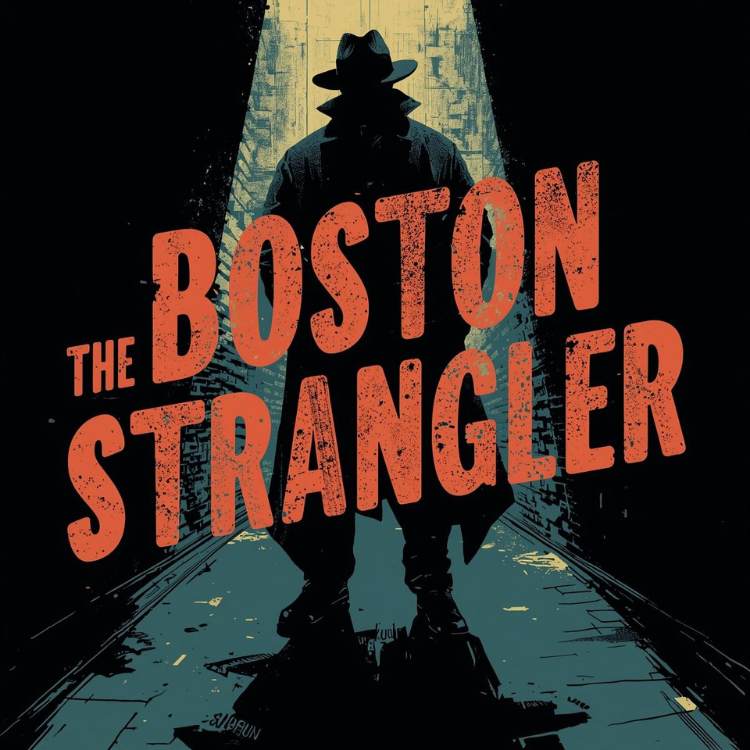
A City Haunted by Fear
In the early 1960s, Boston was gripped by fear. Women across the city began locking their doors, walking in groups, and glancing nervously over their shoulders. Between 1962 and 1964, thirteen women were brutally murdered in their own homes — victims of a killer the media would soon call “The Boston Strangler.”
The case shocked the United States and quickly became one of the most infamous crime stories of the 20th century. But as time passed, the question grew more complex: Was there really a single Boston Strangler? Or had fear, rumor, and the media created a myth larger than the truth?
This is the story of the real crimes, the controversial investigation, and the enduring legend that blurred the line between fact and fiction.
1. Boston in the Early 1960s: A City on Edge
To understand the panic, it’s essential to picture Boston in the early 1960s. The city was a patchwork of old neighborhoods — many inhabited by single women, widows, and working-class families.
Before the murders began, Boston was considered relatively safe. But that changed forever in June 1962, when the first victim, Anna Slesers, a 55-year-old seamstress, was found strangled with her own bathrobe belt. Her apartment showed no signs of forced entry.
Soon, more women were found dead — all strangled, many sexually assaulted, and killed with objects from their own homes. The victims ranged from 19 to 85 years old, and although most lived alone, there were few other clear patterns.
The randomness was terrifying. Anyone could be next.
2. The Murders: A Pattern — or a Puzzle?
The early investigations found disturbing similarities between several of the murders:
- The victims were female and lived alone.
- Most were strangled with nylon stockings, scarves, or belts.
- Many were sexually assaulted.
- There were no signs of forced entry — suggesting the killer was either trusted or persuasive enough to be let inside.
However, not all cases fit perfectly. Some women were older and killed differently. Others showed different levels of violence or signs of robbery, hinting that more than one person might have been involved.
By 1963, the city was in panic mode. Newspapers printed sensational headlines, describing a “mad sex killer.” The image of the Boston Strangler became an urban nightmare — a faceless predator lurking behind every door.
3. The Confession of Albert DeSalvo: A Breakthrough or a Mistake?
In 1965, police arrested Albert DeSalvo, a maintenance worker and petty criminal, on unrelated charges of sexual assault. While in custody, he confessed to being the Boston Strangler, giving detailed descriptions of all thirteen murders.
At first glance, DeSalvo seemed to know details only the killer could know — descriptions of victims’ apartments, the way they were tied, and certain objects used in the crimes.
However, there were major problems:
- No physical evidence linked DeSalvo to the murders.
- He was never charged with homicide — only with other sexual crimes.
- His confession contained errors and inconsistencies, possibly fed to him by police or fellow inmates.
- He had a history of psychological instability and a need for attention.
Despite these issues, DeSalvo’s confession was widely accepted. The public wanted closure, and the police wanted the nightmare to end. But not everyone was convinced.
4. Criminological Perspectives: A Case of Collective Fear
From a criminological standpoint, the Boston Strangler case illustrates how society’s fear and the media’s power can shape a criminal legend.
Experts suggest that DeSalvo’s confession may have served as a psychological release for the public — giving a face to an invisible threat. Once a suspect was named, fear seemed easier to manage.
Yet, criminologists studying the case later noted that the victim profiles and crime patterns were too varied for a single killer. Some murders had clear sexual motives; others didn’t.
This led to the theory that multiple killers operated in Boston at the time — possibly copycats inspired by the media frenzy.
In many ways, “The Boston Strangler” became less a person and more a symbol — the embodiment of society’s anxiety about vulnerability, sexuality, and urban life.
5. The Role of the Media: Creating a Modern Monster 📺
The press played a decisive role in shaping the Boston Strangler myth.
Between 1962 and 1964, local and national newspapers printed daily stories about the murders, often exaggerating details or linking unrelated cases.
Sensational headlines such as “Boston Women Strangled!” or “Sex Fiend Terrorizes the City” created widespread panic. The killer became a household name before any suspect had even been arrested.
Television and magazines reinforced this fear, portraying the Strangler as an evil genius or sexual deviant — an image far removed from the messy, uncertain reality of the investigation.
This media frenzy had two lasting effects:
- It pressured the police to solve the case quickly, possibly leading to investigative shortcuts.
- It cemented the legend of the Boston Strangler in American culture — transforming real tragedy into myth.
6. The DNA Revelation: Science Reopens the Case 🔬
For decades, doubts persisted. Many law enforcement officials, journalists, and even relatives of the victims questioned whether DeSalvo was truly the killer.
Then, in 2013, new DNA evidence offered a breakthrough. A sample of DNA taken from one of the murder scenes — the 1964 killing of Mary Sullivan — was matched to Albert DeSalvo through genetic testing of his relatives.
When DeSalvo’s body was exhumed, direct DNA comparison confirmed the match.
It was the first and only murder directly linked to him through forensic evidence.
This result suggested that DeSalvo had indeed killed Sullivan — but it didn’t prove he was responsible for all thirteen murders. Many experts still believe other killers were involved, especially since several crimes bore different characteristics.
Thus, while science partially validated DeSalvo’s confession, it also deepened the mystery.
7. The Psychology of Albert DeSalvo 🧠
DeSalvo’s background helps explain part of the puzzle. Born in 1931 in a poor Boston family, he endured a violent childhood with an abusive father. As a teenager, he was already in trouble with the law, mostly for theft and sexual offenses.
Psychiatrists later described him as a compulsive liar, a pathological attention-seeker, and possibly a sociopath. Some experts believe that his confession was an attempt to gain notoriety, even if he hadn’t committed all the murders.
Interestingly, DeSalvo himself never stood trial for the stranglings. He was convicted instead for unrelated sexual assaults (the so-called “Green Man” attacks) and sentenced to life in prison.
In 1973, he was stabbed to death in prison, under mysterious circumstances — leaving many questions unanswered.
8. Myth, Memory, and the Birth of a Legend 👻
Over time, the Boston Strangler ceased to be just a criminal case — it became a cultural phenomenon. Books, documentaries, and films portrayed him as the ultimate symbol of the 1960s “hidden evil” lurking behind everyday life.
The 1968 movie The Boston Strangler, starring Tony Curtis, helped immortalize the myth. Although based loosely on real events, it portrayed DeSalvo as a complex, almost tragic figure — reinforcing the idea of a single, tormented killer.
In popular memory, the story merged fact and fiction, turning a series of unsolved murders into one chilling narrative. The myth of the lone predator prowling Boston’s streets endures, even though historical evidence paints a far murkier picture.
9. A Criminological Legacy: What the Case Taught Us
Beyond its horror, the Boston Strangler case reshaped American criminology and public attitudes toward sexual violence, forensic science, and media responsibility.
Key lessons include:
- 🔍 The need for solid forensic evidence: Confessions, especially under pressure, are not always reliable.
- 🧬 The power of DNA technology: Modern science can clarify decades-old mysteries.
- 📰 The impact of media narratives: Sensational coverage can distort public perception and even affect investigations.
- 👥 The psychology of serial crime: The case opened discussion about sexual deviance, compulsive behavior, and social alienation.
Ultimately, the Boston Strangler remains a reminder that truth in crime stories is rarely simple — and that fear often shapes what people choose to believe.
10. Myth vs. Reality: Separating Fact from Fiction
| Myth | Reality |
|---|---|
| There was one single killer known as “The Boston Strangler.” | Evidence suggests multiple killers may have been responsible for the murders. |
| Albert DeSalvo was convicted for the murders. | He confessed but was never tried for them. |
| His confession was fully accurate. | It contained significant errors and inconsistencies. |
| The police solved the case conclusively. | The case remains partially unsolved. |
| The story is just a local crime. | It became a symbol of urban fear, media power, and the dark side of modern society. |
The Truth Behind the Legend
More than sixty years after the murders, the Boston Strangler still fascinates criminologists, historians, and the general public alike.
The real story — tangled in fear, media myths, and flawed investigations — reveals more about society’s psychology than about a single killer. It shows how collective fear can build monsters, and how truth can be buried under layers of sensationalism.
Whether Albert DeSalvo acted alone, or whether others shared the blame, one fact remains: the legend of the Boston Strangler will continue to haunt the public imagination — as a cautionary tale about crime, truth, and the fragile boundary between fact and myth.
Sources
- Boston Police Department Archives
- Massachusetts State Police Forensic Division Reports
- National Center for the Analysis of Violent Crime, FBI
- The Boston Strangler by Gerold Frank (1966)
- Case Closed: The Boston Strangler (A&E Documentary, 2013)
- Smithsonian Magazine: “The Real Boston Strangler” (2022)
- The Guardian, “DNA Evidence Confirms Albert DeSalvo’s Role in One of the Killings” (2013)

